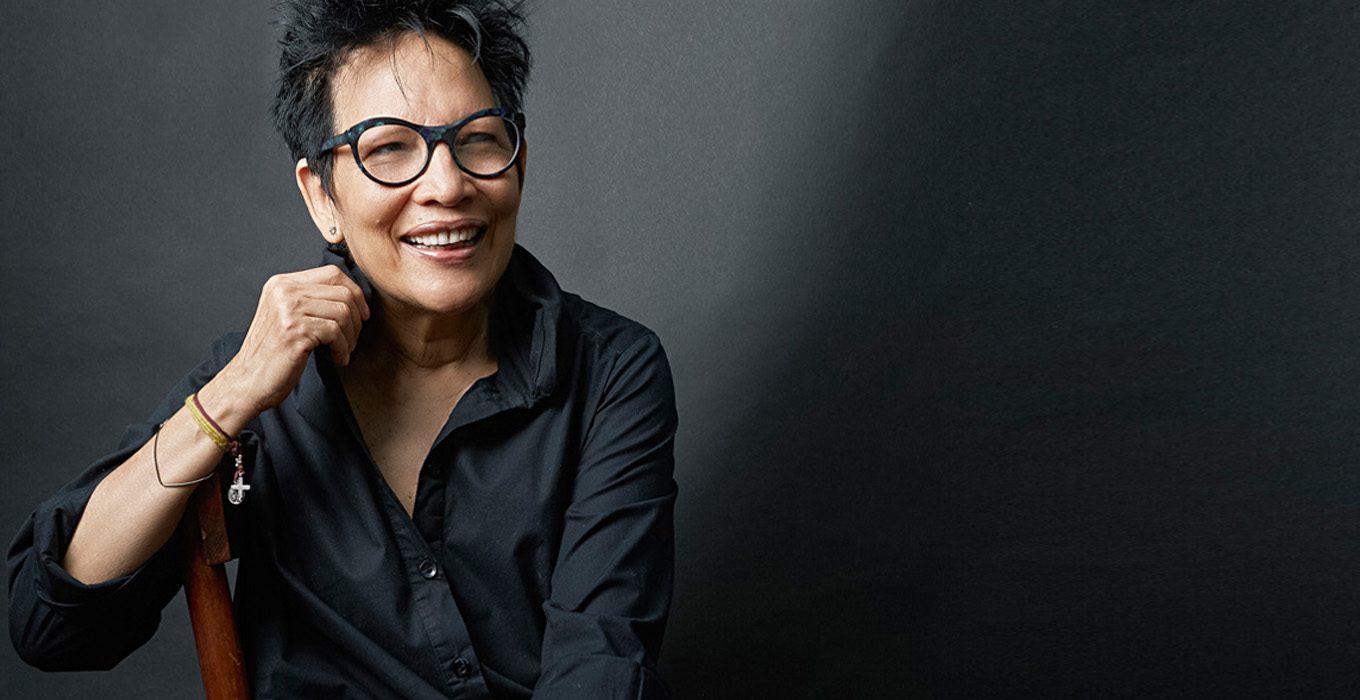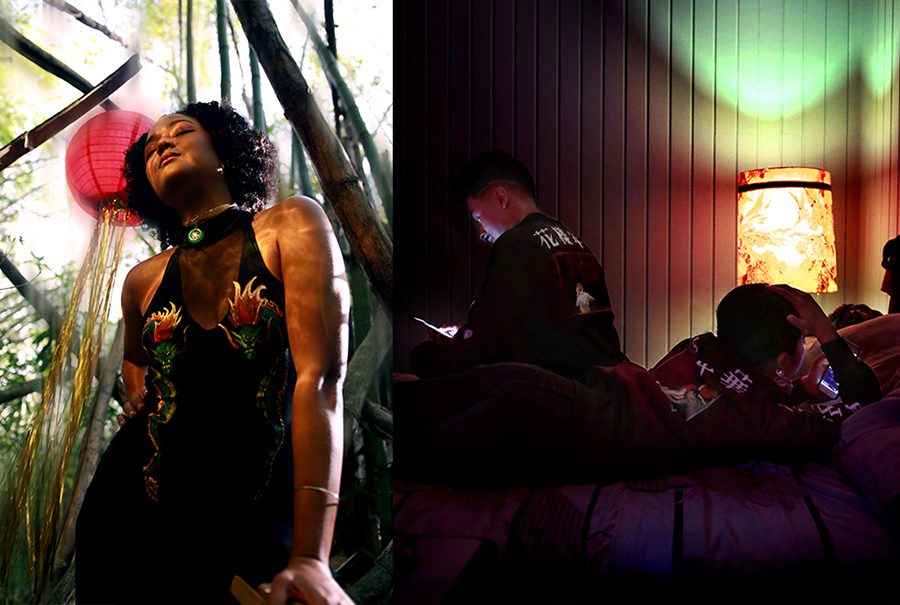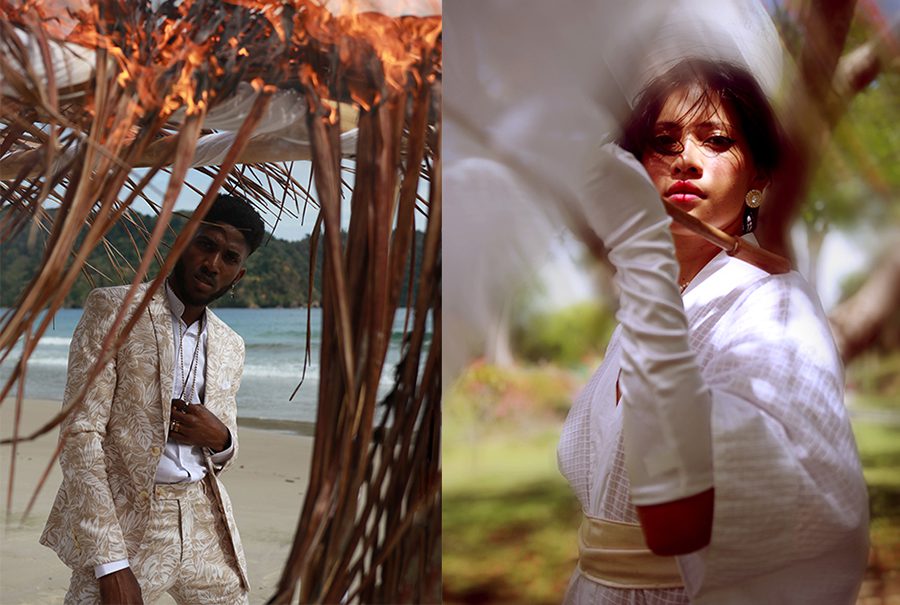

July 16, 2018
Red orange, yellow green, blue violet, yellow orange… all singular colours in the Crayola box. None of them are quite one standard colour but all of them are surely a little bit of two. Acutean9le see this blending in themselves, in the society and communities around them and are highlighting this in their work. What is culture exactly? In the dictionary it is defined as ‘the ideas, customs and social behavior of a particular people or society’. In the Caribbean the amalgamation of several cultures has now borne our own culture that varies slightly and vastly from island to island but the hybrid is prevalent. In this global climate where diversity seems to be a controversial topic the women of acutean9le are highlighting its existence in the local landscape with the portraiture work. Having gone to schools in other countries where they experienced covert reactions to diversity and having that feeling of not belonging or fitting in they have been able to take note of the more nuanced way we deal with it at home.
Acutean9le through their work highlight the beauty that is created from the blending and mixing of our different cultures, heritage, religions, and the mixing of races. Their work series’ seek to delve in to our differences and how we bring them together as organically as we can and while it may seem to not fit by other cultures to us it is who we are.
So the name Acutean9le. Let’s start there. What does it mean?
B+C: We were brainstorming ideas and trying to find a name that captured our shared history as friends. We were toggling with several names but, acute an9le (pronounced acute angle), is the one that stood out. It is a double entendre originating from our shared love of the STEM (Science, Technology, Engineering and Math) field and photography/art. And a happy coincidence that both of our houses are #9.
Who are Bakhita and Celine?
B+C: We’re two friends who knew each other from Caribbean Dance School but became closer in CAPE Chemistry lessons. We’re both recent University graduates and returned to Trinidad in 2017 to start working full-time jobs.
Tell us some more about yourselves:
CELINE: I grew up in Santa Cruz, went to Bishop Anstey High School (PoS) then I moved to the America to attend the University of Delaware, where I received a Bsc. Biochemistry and a minor in Woman Studies.
This was the first time being away from my overprotective parents and it was the first time being in a predominately white space.
There I never really felt as though I saw faces that looked like mine around me and to this day I’ve yet to experience that. I’ve always felt slightly displaced in the U.S.
BAKHITA: I was born in Maracas Valley, St. Joseph where I spent pretty much all of my life up until I left the nest to go to University in 2014. I went to my mom’s preschool which was the downstairs of our house, then down the road to St. Xavier’s Private School and 7 years later I just shifted next door to go to St. Joseph’s Covent, St. Joseph for another 7 years. There is nothing more comforting to me than seeing the Silver Bridge bordered by mountains on the entrance to the Valley.
I’m also a member of the Noble Douglas Dance Company and I attended UWI, Mona to do Physiotherapy, which I completed last year, 2017.
Dance? Physiotherapy? Where did Acutean come in?
BAKHITA: I usually take the photos for acutean9le while Celine does the creative direction. Photography piqued my interest in my early teens when my parents bought a family point and shoot camera, which I coveted. Coupled with my love of dance and fascination to immortalize moments in time, I became even more intrigued with photography and this fascination increased when my sister bought me a Canon DSLR after my CSEC examinations.
I always figured that in another life I’d be a documentary photographer but now I’m realizing that through the series we do with the different people we meet, I’m able to do just that.
I love the way you’re using portraiture to illustrate and present your personal ideas about culture, heritage, religion and being mixed race. Is this entirely influenced by being mixed race and Trini or has the foreign influence also made an impact?
CELINE: For me all those things influence my personal ideas on culture, heritage, religion and being mixed race.
Trinidad is such a melting pot of races, cultures and religions and I only appreciated the beauty of that callaloo when I saw how divided America was. I think I had the see the overt prejudice to be able to see the more covert, nuanced prejudice that, I think, Trinidad has.
Even though the world is infinite; technology and globalization have made it seem smaller and there’s no escaping foreign influence. We don’t live in a vacuum and as much as I try to avoid external stimuli they ultimately inform my ideas of self and politics whether consciously or subconsciously. However, I always try to self-reflect on how these outside influences inform my thoughts and actions.
In one of your post you talk about feeling like you don’t quite ‘fit in’ when it comes to being seen as ‘Afro-Caribbean’ or ‘Indo-Caribbean’. You mention cultural appropriation as well. Can you elaborate a bit about what you mean and how you feel ‘Bakhita’?
B+C: The particular post and self exploration of Afro-Caribbean and Indo-Caribbean roots is actual our friend Soryah. We asked her to do a shoot with another one of our friends where they explore their relationship to their Indian heritage (they’re both half Indian), this is the beginning of the Peppa Pot Pickney series where we hope to explore other people’s experiences with their mixed heritage.
How this particular shoot went is that we posed the concept for the shoot to them (exploration of their mixed Indian heritage and self-identity), do the shoot and then we asked them to write a few short paragraphs about their thoughts and experiences surrounding the theme.
CELINE: My hope is, like my experience of donning on the sari and cheongsam for the Chin(ee)dian Gyal Series, the attempted physical portrayal of these abstract ideas and then the reflective 3 paragraphs (that we break up into the captions) helps people sort through their thoughts and experiences. I noticed that people post a lot more deep and meaningful captions with their photos which I love but the photo itself sometimes felt disjointed from their words. Acute An9le aims to connect the visuals with the words.
In another post Celine you talk about colourism and being of both East Indian and Chinese decent. —Please tell us more about your feelings and thoughts behind that.
CELINE: To be honest I never noticed how my skin was darker compared to (the portrayal of) Chinese people from China… until I moved to the U.S. to study. I was suddenly stripped of my Chinese identity because I was too brown to be Chinese. It made me aware of my Indian Heritage which felt neglected in Trinidad.
I’m not sure why Trinis latch onto my Chinese identity more in public spaces but just the other day someone asked me, “You sure you not from China.” … So, my running theory, which is based on colourism, is that because Chinese identity is associated more with lighter skin and Indian identity tends to be darker skinned. I gain more social capital when I am perceived to have lighter skin; i.e. Chinee. But one of my friend’s theory is that because Indian identity and faces are common in Trinidad it could be that my Chinese heritage stands out more and I am deemed Chinese just as a defining characteristic. Which also makes sense, but I think that there’s probably a little bit of reality in both of those theories.
What is your intention with the Instagram profile? What are you hoping to communicate through your images and captions?
B+C: We felt as though Instagram had the farthest reach in terms of accessing a wider audience especially when it comes to showcasing art (photos etc.).
We didn’t want to post images that were just about aesthetics. We want to create images that start a dialogue, provoke thought and possibly be a form of catharsis.
We aim to ground our work in our social and physical spaces and try to create a fake-real world from those spaces that can only exist in print.
BAKHITA: EVERYONE is on Instagram these days, and when it comes to promoting your business I think Instagram is the first option. However, that is probably invalid and biased as I don’t frequent Twitter or Facebook.
CELINE: Same (I don’t frequent Twitter or Facebook), I’m also a very visual thinker and Instagram is a visually based platform so it feels like the right place to showcase our art in an instant gratification driven world.



INTERVIEWER: TANYA MARIE. ALL PHOTOS VIA: @ACUTEAN9LE